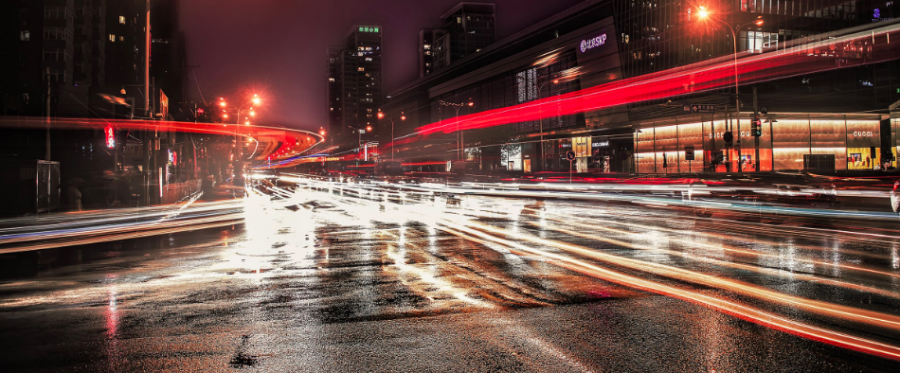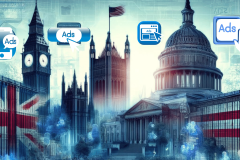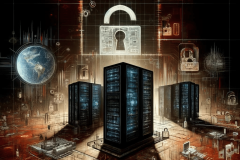The smart city began as a science fiction dream, but it’s very quickly becoming a reality. Municipal infrastructure, integrated with smart technology, will transform the aesthetics, utility, and sustainability of urban landscapes from here on out.
To see a smart city in action, just look to Washington, D.C., which has embraced a top-down approach to smart city planning rather than try to innovate in just one neighborhood or problem area. Thinking of cities as interconnected spaces operating holistically is one of the hallmarks of smart city planning.
Embracing new modes of transportation is a key priority for smart cities. For instance, Atlanta recently passed legislation requiring certain new construction to include charging stations for electric vehicles. Supporting this underlying infrastructure will allow clean, efficient vehicles (and driverless cars) to take over urban travel.
But if the cities of tomorrow are going to be better than the cities of today, civic leaders need to make cybersecurity a priority. The potential of smart cities is only matched by the danger of smart threats.
Smart cities operate on a foundation of technology, which makes them both more capable and more vulnerable because digital infrastructure can be attacked or hijacked in countless ways. According to CenturyLink’s 2018 Threat Report, geographies that have strong or fast-growing IT networks and infrastructure remain the primary source of cybercriminal activity. CenturyLink, the second largest U.S. communications provider to global enterprise customers, tracks these threats and estimates that 195,000 instances occur daily.
The scale and complexity of smart cities render them particularly susceptible to cyberattacks. The vast array of interconnected systems makes weak points and oversights almost inevitable, a problem that reliance on unsecured IoT devices and potentially vulnerable cloud networks only compounds. What’s really driving this problem, however, is the overconfident tech visionaries who are boosting smart cities.
It’s easy to get seduced by the promise and potential of high-tech metropolises, so much so that we lose sight of the risks technology creates. As long as this blind spot persists, cities will get a lot smarter and a lot less secure in direct proportion. It’s incumbent upon city leaders to expand their perspective on the smart city and focus on the peril along with the promise. Follow these strategies to prepare (and protect) any city for the future:
Begin Building a Smart Workforce
Running a city is technical, but it’s not exactly technological. Most cities rely on a municipal workforce made up largely of administrators and trade professionals. Historically, city governments haven’t needed to have a large IT brain trust. Given the priorities of the smart city, that’s going to have to change.
One survey of government officials showed that 40 percent worry a lack of technical talent will hold back their smart city initiatives. High-tech professionals will need to do everything from managing databases to building intelligent roadways to managing citywide cybersecurity. If cities hope to make progress both quickly and cautiously, they will need to begin building a new workforce and expanding their institutional focus on technology. There are numerous training programs that can help a city or business teach its current workforce about tech, such as IEEE online courses that focus on emerging technologies.
Start Forming Security Partnerships
The task of securing smart cities won’t fall on cities alone. The job is immense, and it makes much more sense to work cooperatively with a variety of stakeholders. For instance, cities have an agenda that aligns with state and federal governments, as well as private enterprises, both inside and outside of tech. Coordinating all of those entities to address threats and to boost smart city projects is the only way that smart cities can succeed.
In one example of these kinds of public-private partnerships, AT&T and GE Current are working with Georgia Electric to install 200 smart LED streetlights. The streetlights provide illumination while also tracking traffic, parking, and pedestrian patterns and even monitoring for gunshots. Integrating ideas — whether from the public or private sector, whether innovation- or security-related — is going to be critical for the success of smart cities.
Work Within the Rules
Along with the rise of smart cities, we are beginning to see the rise of sweeping cyber regulations. In response to years of relentless data breaches and cyberattacks, regulators are beginning to introduce expansive rules for tech usage and data protection. The recent General Data Protection Regulation (GDPR) rules in Europe are the best example, and they’re likely to be imitated at the state and federal levels in the U.S.
Working within GDPR is an excellent way to keep cybersecurity and data protection in focus. It’s also a risk that must be managed. As cities begin to collect more data and implement more technology, they raise the prospect of GDPR noncompliance, followed by penalties, fees, and lawsuits. This risk may not be as extreme as that of hackers, but it’s something city leaders must defend against as cities become smarter.
Technology has always been a doubled-edged sword, creating as many new problems as it does possibilities. It’s up to city leaders to acknowledge both sides, then work on blunting one while sharpening the other.










